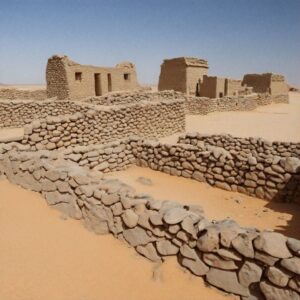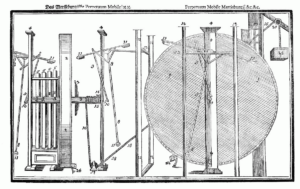Fourteenth-century Malian ruler Mansa Musa was possibly the richest man in history. His empire covered most of West Africa, and his wealth was unfathomable.
In 1324, he set off on his Hajj, a Muslim’s once-in-a-lifetime pilgrimage to Mecca. He traveled 4,345km across the desert in extravagant fashion, with thousands of men wearing the finest silks and carrying gold objects. The entourage included hundreds of animals.
Amid all the excitement, he circulated a peculiar story about his predecessor, who supposedly sailed to the Americas long before the Europeans.

Mali Empire, 1337. Illustration: Gabriel Moss (CC BY-SA)
According to 14th-century Arab historian al-Umari, Musa briefly stayed in Cairo. There, he told the city governor about his predecessor, Abu Bakr II. Supposedly, Abu Bakr II abdicated the Malian throne and embarked on a great expedition across the Atlantic Ocean. He took 2,000 ships, with sailors, builders, craftsmen, and enough provisions for several years. But Abu Bakr never returned, and Musa claimed the throne.

Mansa Musa holding a gold coin in the Catalan Atlas. Photo: Gallica Digital Library
Beyond this account, the story seems to hold little historical weight. Musa’s official genealogy does not speak of an Abu Bakr II, except for the brother (or grandson) of the Malian Empire’s founder. Some say this confusion stems from mistranslations of texts from other Arab historians, who claim it was actually a man named Muhammed ibn Qu.
Theories
Revisionist historians, like Ivan Van Sertima and Gaoussou Diawara, have been trying to piece together evidence that would support the controversial hypothesis that Africans beat the Europeans to the Americas. Ivan Van Sertima’s thesis, They Came Before Columbus, cited stories told by oral historians called Griots. They claimed that Abu Bakr set off across the Atlantic in 1311. He supposedly passed the throne to Kankou Moussa, who eventually became Mansa Musa.
Diawara supported this theory, arguing that the Griots did not speak of his expedition because they found the abandonment of his duties cowardly and dishonorable. Both historians believe Abu Bakr II might have reached the Americas.
Some people believe that Abu Bakr established a colony in Brazil, where he traded with the Tupi people and sent New World wealth back to Mali. In these stories, he named the colony Bourne Bambouk, after the empire’s famous gold fields. Bourne Bambouk is said to have been situated near the modern city of Recife, in the northeastern state of Pernambuco in Brazil.
Possible evidence?
Abu Bakr’s putative voyage is a piece of a bigger puzzle. Historian Van Sertima uses archaeological evidence, eyewitness accounts, oral traditions, and Columbus’s logs to support his argument that the voyage happened. According to Columbus, natives of Hispaniola claimed that black-skinned people from the south, with gold-tipped spears, made contact and traded with them. The metal was called guanine, and it originated in Africa. Additionally, Van Sertima pointed out similarities between Olmec statues in Mexico and African facial features.

An Olmec head, which supposedly bears a resemblance to African features. Photo: Arturo Verea/Shutterstock
Spanish explorer Vasco Nunez de Balboa claimed to have seen Native Americans wearing head wraps and handkerchiefs with Guinean patterns. He also claimed to have seen black-skinned people held as prisoners in a Native American village. Another source, Nicholas Leon, also relayed reports of black-skinned people in the Americas.
Van Sertima believed that ocean currents could have carried boats from Africa to the New World.
The takeaway
Did a figure from that era make it to the Americas? While it is a compelling story, there is simply not enough evidence to back this up. The reliability of oral traditions can be hit or miss. Stories passed down through multiple generations can change over time. Eyewitness accounts fall into this category as well. Many agree that Columbus himself was prone to exaggeration to make his expeditions more exciting and to secure more funding. Mansa Musa could even have told this story simply to entertain his Egyptian hosts.
Though some of Van Sertima’s claims are interesting, the lack of supporting genetic evidence makes it a hard sell. Nevertheless, the mystery endures.






